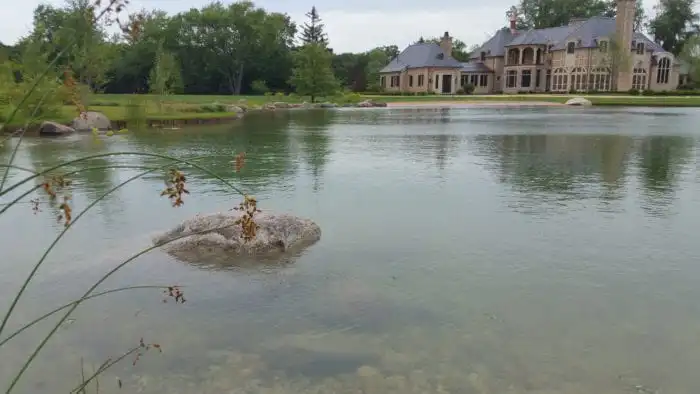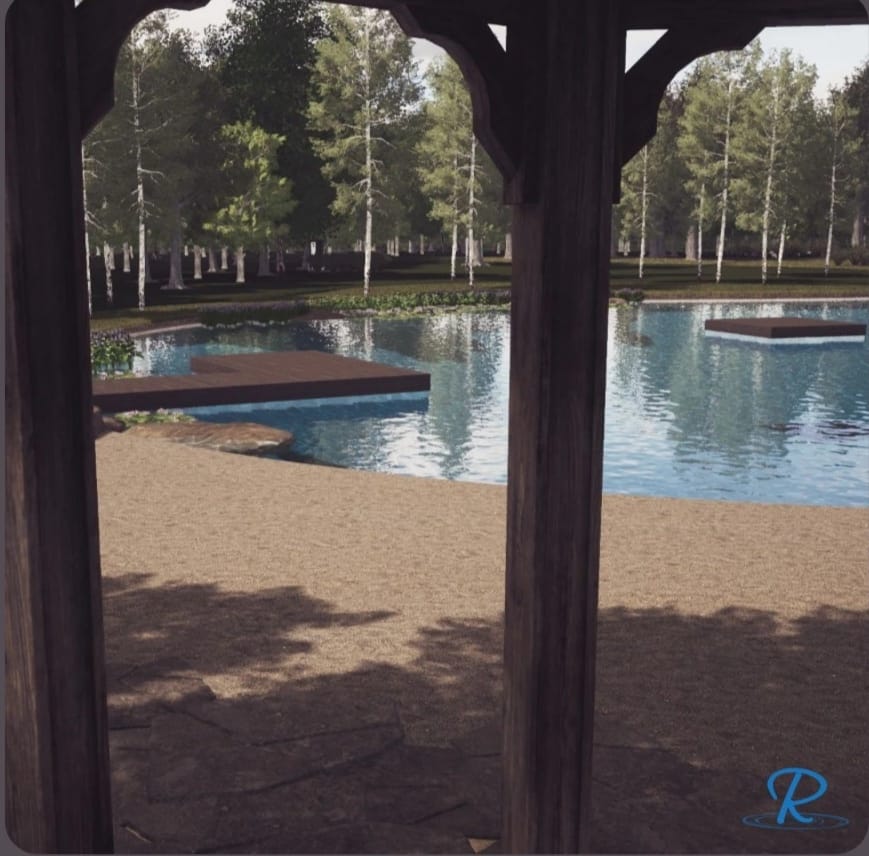5 Things to Consider when Creating a Beach for Your Pond
July 12, 2020, 0 CommentsYou may already have a lovely pond on your property, and while it’s beautiful to look at, you might also feel that you could spend more time there if only there were a beach surrounding it. A beach makes water activities such as swimming, fishing, and sunbathing much more convenient.
Many beaches around the world aren’t only a result of natural forces and weather breaking rocks into sand, but some are partially man-made beaches. So, why not consider creating a perfect beach at your pond so that you’ll have access to a great beach experience whenever you want?
Here is our list of the most important things to consider when building a beach addition to your pond.
Check Local Regulations Before Building a Pond Beach
The first step in beach building in the United States is to check in with the local zoning board or Department of Natural Resources to see if you can legally build a beach on your property. And be sure to get a building permit to proceed in areas where there are endangered plants or animals as the fines can be pretty stiff if they are destroyed, even accidentally.
How to Prevent Weeds from Growing Through the Sand
Don’t start dumping loads of sand in your eagerness to get the beach completed. You’ll need to do some type of weed control so that you won’t have pesky weeds growing through the sand to ruin the effect you were looking for. Depending on the size of your prospective beach, you can lay down plastic liner or sand mats before adding sand to keep the sand in place and prevent any plant growth on the beach. There are also special herbicides you can apply so that weeds and other plants don’t spring up and ruin your beach.
How to Keep Sand from Washing Into the Pond
Unless you create some type of barrier at the place where your sand meets the bottom of the freshwater pond, your sand will wash away. Things like a cross tie, landscape timber barrier, or concrete curb can all work to keep sand in place. It’s also a good idea to mark the barrier with small flags or buoys to prevent injuries. We also recommend stones or geotextile bags to keep sand in place.
Best Type and Amount of Sand for Your Pond Beach
How much sand will you need? As a rule, for most pond beaches you should plan to cover the beach in a minimum of 6 inches of sand, but do not exceed more than 18 inches. Measure the area for your beach and then calculate the sand depth and the area to cubic feet or cubic yards.
What type of sand should you buy? The best kind of sand to buy is called beach sand or mortar sand. Both have perfect textures for beaches and are easy to purchase. The expert staff at Reflections Water Gardens are available to help with sand calculations, advice, and purchases.
Maintaining and Cleaning Your Pond Beach
Keep the beach tidy. In spite of preventative measures, there will always be some plants that will push through the sand. You can use a sand rake like those used at golf courses to keep your new beach clear of debris and unwanted plant life. Using a rototiller on the sand a few times a year will help keep it inviting and weed-free. Creating a beach for your pond is a great idea to extend the use of this outdoor water feature, and it’s easier than you may think to accomplish.
Choosing the Best Location for a Pond Beach
Choosing the right location is the first step in creating a functional and beautiful pond beach. Consider a spot that gets plenty of sunlight for warmth and natural light, enhancing the beach experience. Ensure the area is flat or easily graded to avoid excessive excavation. Check for proper drainage to prevent water pooling around the beach, which can lead to erosion or muddy areas. Think about the overall design of your pond and select a spot that integrates seamlessly with the surrounding landscape, offering an inviting and harmonious view.
Materials for a Natural-Looking Pond Beach
Selecting the right materials for your pond beach is key to achieving a natural look and long-lasting durability. Choose soft, clean sand for the beach surface to ensure comfort and a genuine beach feel. Opt for materials like gravel or river stones for edging to define the space and reduce erosion. Consider using geotextile fabric underneath the sand to prevent it from sinking or mixing with the soil. When choosing materials, prioritize those that are eco-friendly and blend with the natural aesthetics of the pond.
How to Build a Safe, Gentle Slope for Your Pond Beach
Safety and accessibility are essential elements of a well-designed pond beach. Create a gentle slope leading into the water, ensuring it’s safe for swimmers and easy for children or older adults to navigate. The slope should not exceed a 10:1 ratio, meaning a 10-foot horizontal distance for every 1-foot drop in depth. Incorporate non-slip materials and consider adding steps or handrails if necessary. A carefully designed slope enhances both functionality and safety for everyone.
Landscaping Enhancements Around Your Pond Beach
Landscaping around your pond beach can turn a simple design into a serene retreat. Plant native aquatic plants near the waterline to stabilize the beach, filter runoff, and attract wildlife. Incorporate ornamental grasses, ferns, or flowering plants along the edges to add color and texture. Use natural rocks or driftwood for added charm and structure. By integrating thoughtful landscaping, your pond beach will feel like an extension of the natural environment.
Keeping Your Pond Beach Beautiful Year-Round
Regular maintenance is crucial to preserve the beauty and functionality of your pond beach. Rake the sand frequently to remove debris and maintain a smooth surface. Inspect the area for signs of erosion or drainage issues and address them promptly. Clean and prune surrounding plants to prevent overgrowth or excessive shading. During colder months, protect the beach with coverings to minimize damage from snow or ice. With consistent care, your pond beach will remain a pristine and relaxing escape for years.
Expert Help for Building Your Perfect Pond Beach
Our expert team can assist you with any questions you may have about beach installation for your natural water feature or pool. From permits to sand measurements, let the experience of Reflections Water Gardens complete the backyard you always dreamed of.
Faq’s About Pond Beach
How do you start building a beach?
Start by selecting a suitable location, checking local regulations, and getting any necessary permits. Then clear the area, grade the land, and prepare the base with a weed barrier.
What are some creative pond beach ideas for my backyard?
Incorporate soft beach sand, gentle slopes, native aquatic plants, and natural stone edging. Add lounge chairs, umbrellas, or a fire pit for a resort-style vibe.
What type of sand should I use for my pond beach?
The best sand for a pond beach is beach sand or mortar sand. These types are clean, fine-textured, and safe for walking or lounging.
How do I start building a backyard beach?
To learn how to make a beach in your backyard, begin by choosing a sunny, level area. Clear vegetation, lay down a weed barrier, and add a retaining edge before spreading soft, clean sand.



0 Comments